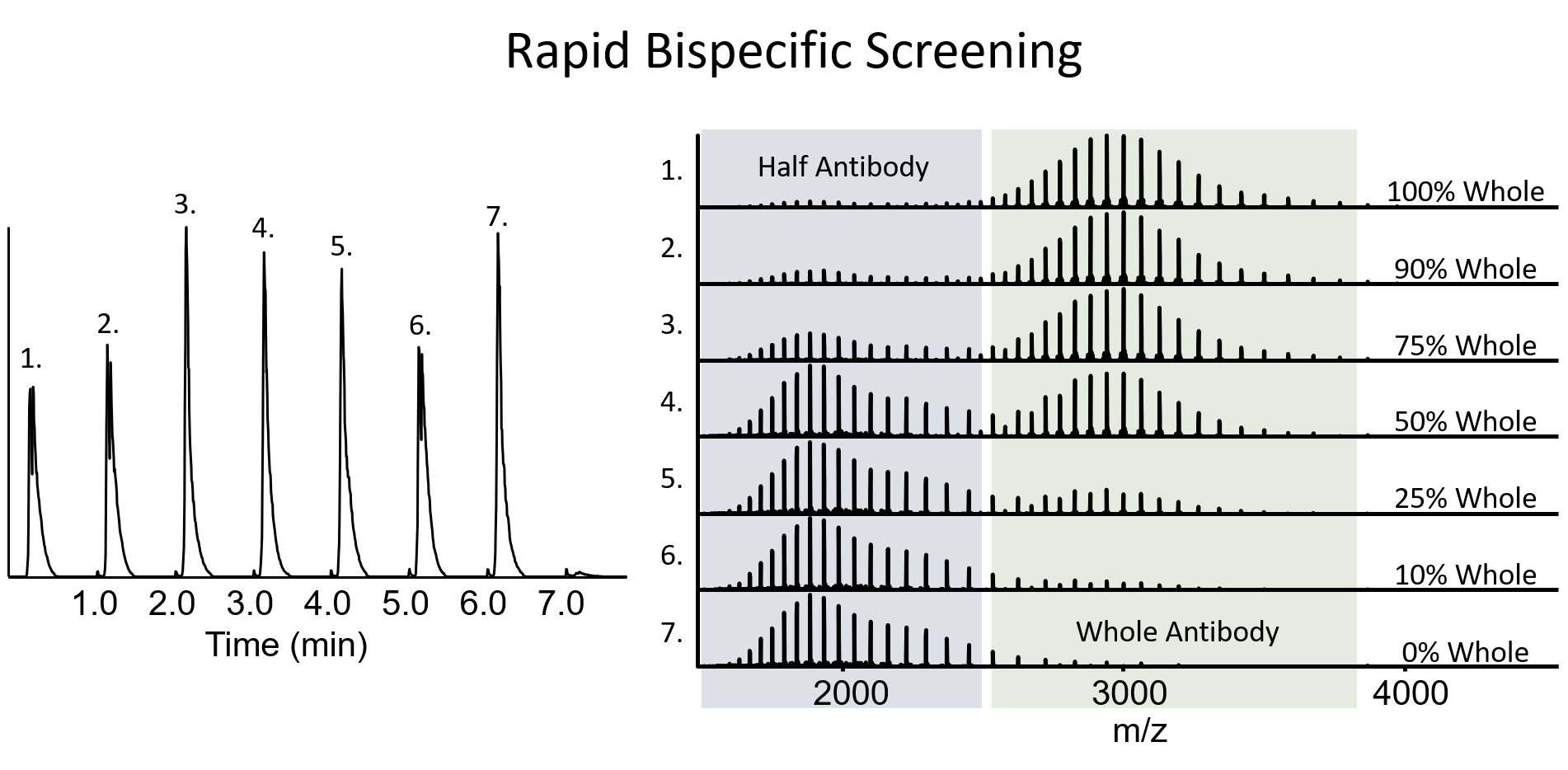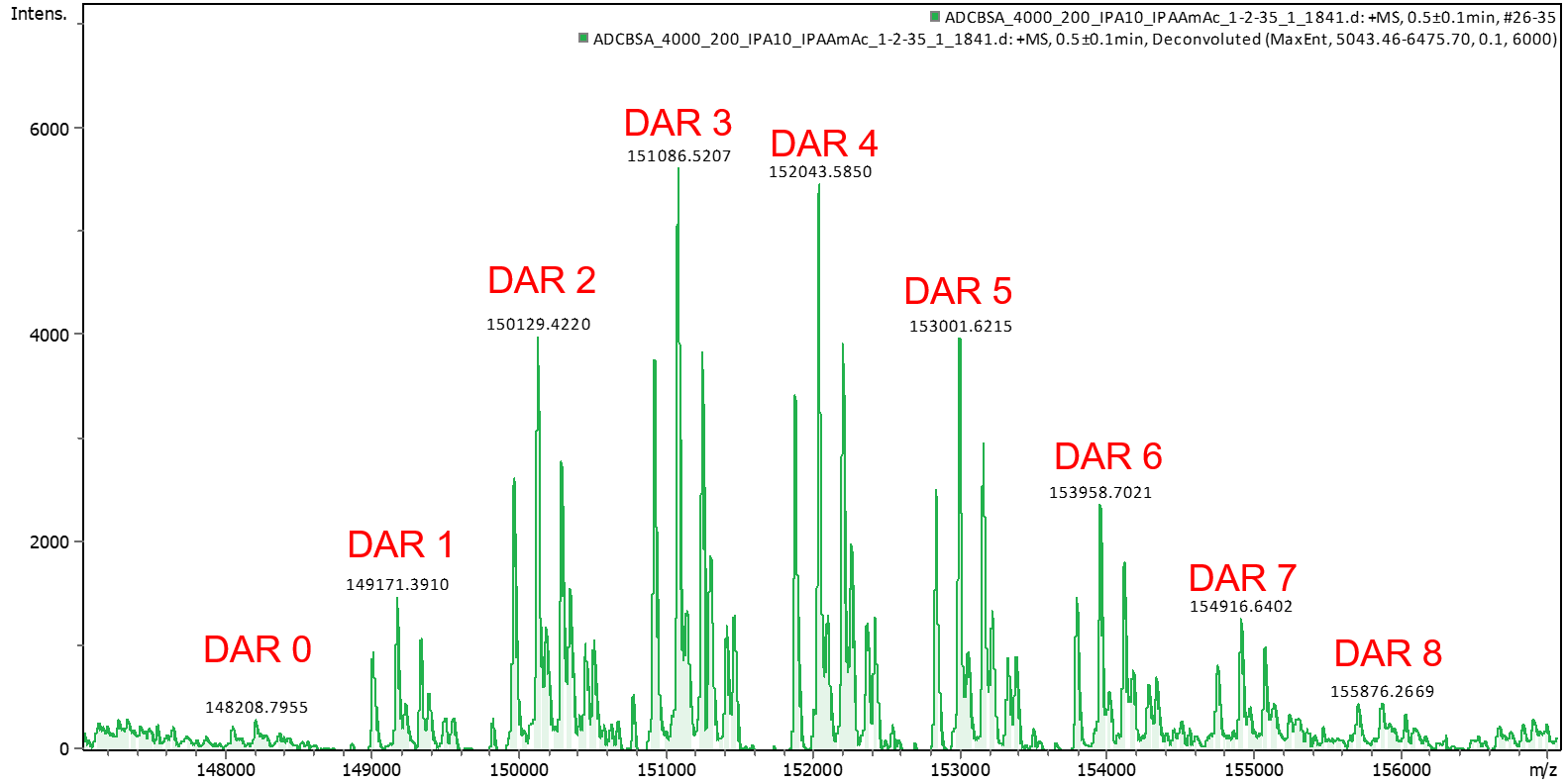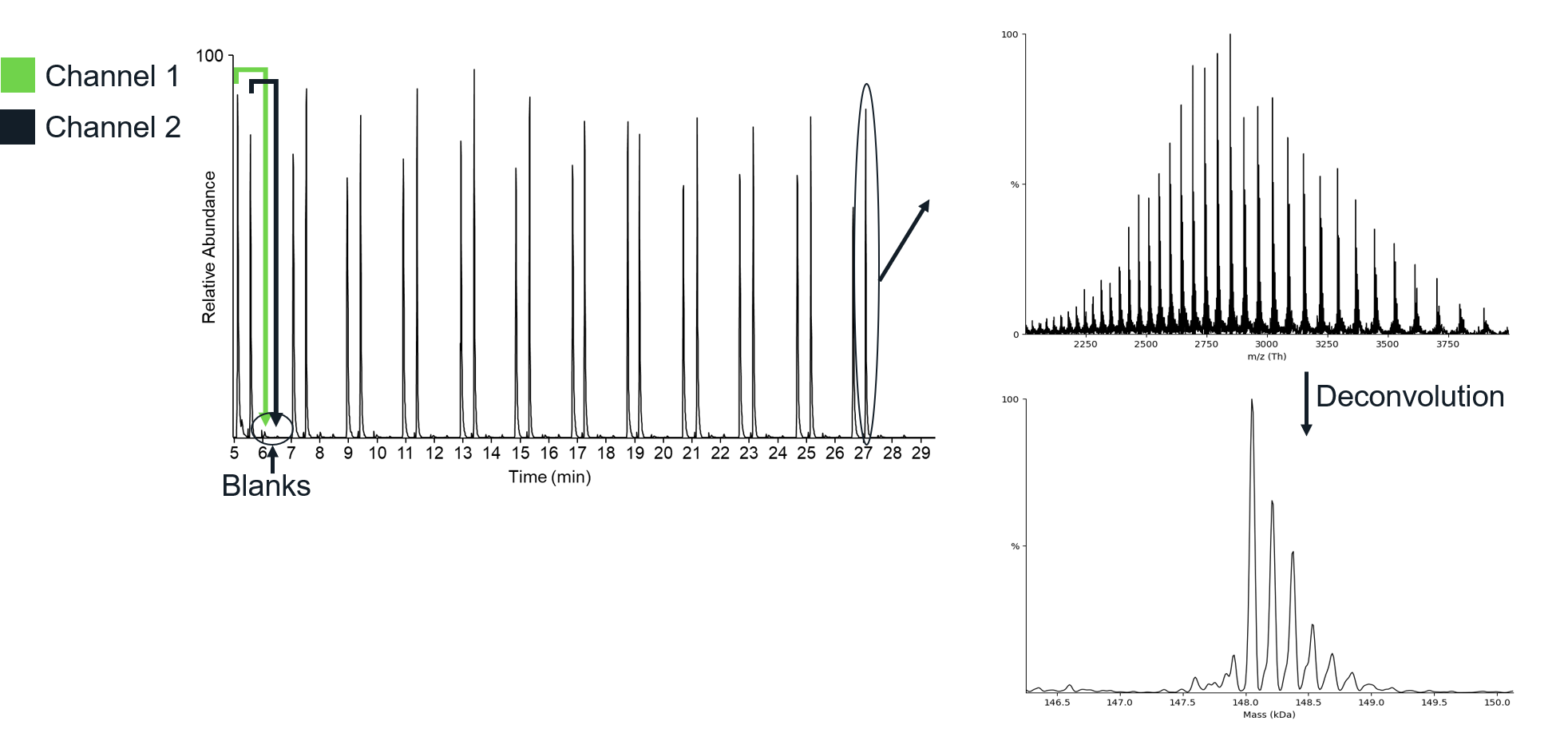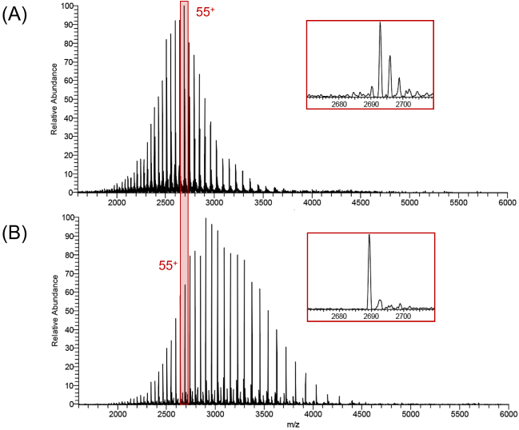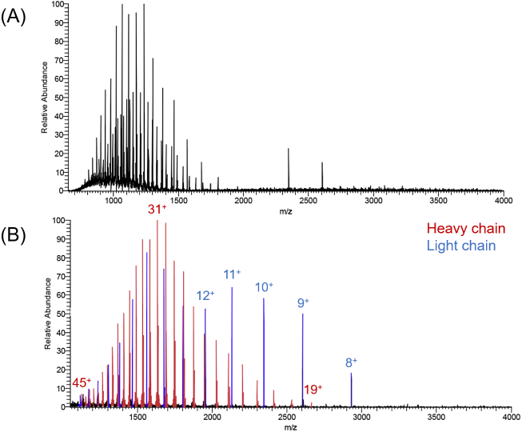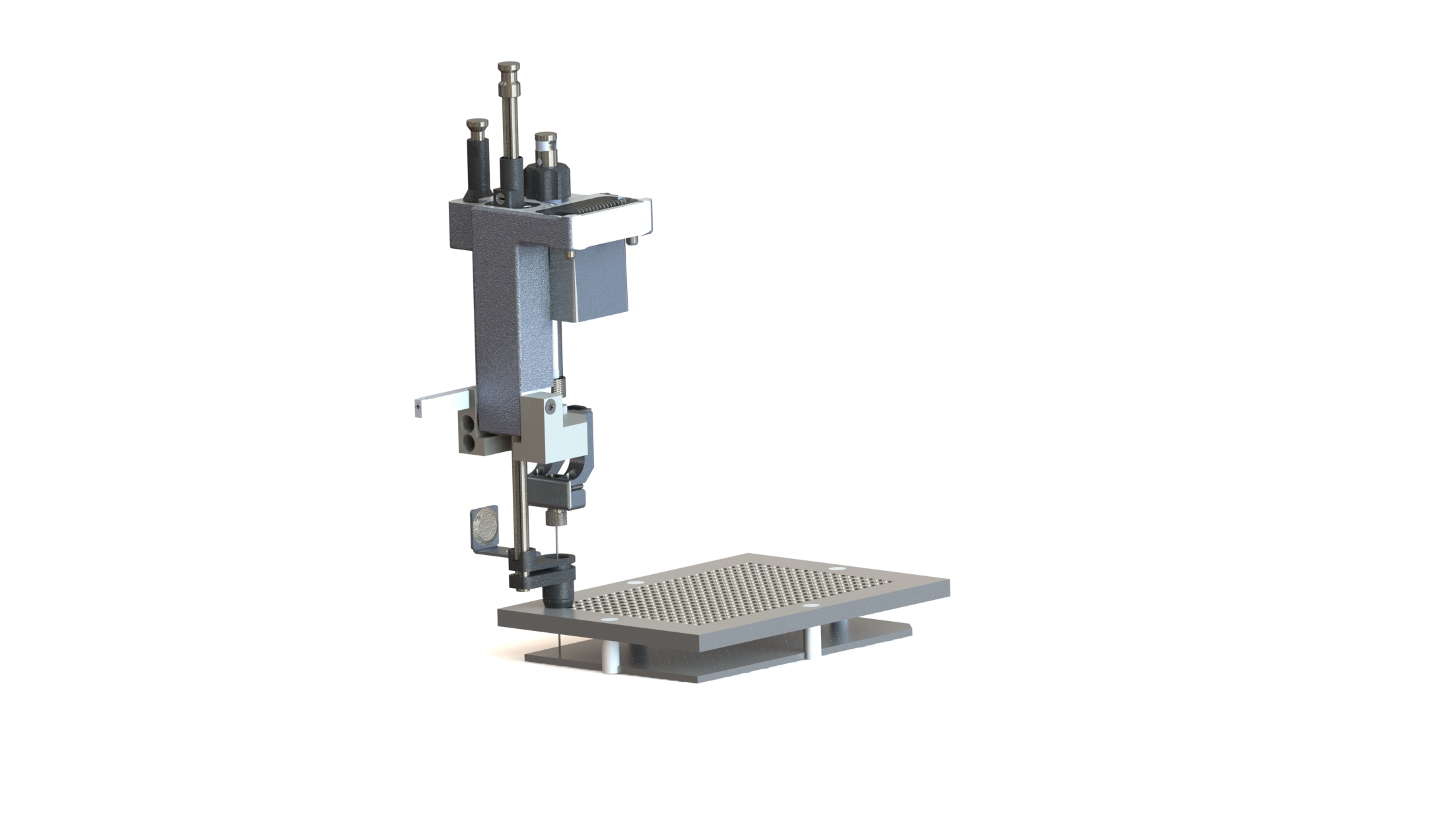A Platform Technology
The SampleStream Platform truly is a platform technology, enabling many different disparate workflows all on a single system. From high throughput screening, to native mass spectrometry and from proteins to oligonucleotides, the SampleStream Platform is the perfect addition to an analytical mass spectrometry laboratory.
Clone Selection Screening
Operating in a simple online mode with denaturing buffers, the SampleStream Platform enables rapid screening of clones for bispecific antibody production. The platform provides results that agree with orthogonal methods such as LC-UV and LC-MS in a fraction of the time, increasing throughput by up to 10x. When turn-around time matters, SampleStream delivers. (Click to Enlarge)
Native Mass Spectrometry
Because the SampleStream flow cell relies on physical trapping, and not chemical equilibrium, a simple solvent change to a neutral pH ammonium acetate solution enables native operation. Preserving non-covalent interactions enables three major workflows, including analysis of protein complexes, protein-small molecule interactions, and non-covalent antibody-drug conjugates.
Protein Complexes
Coupled to mass spectrometry via a standard ESI source, SampleStream delivers capable sample preparation and automation of protein complexes. Eluted at 200 µL/min, GroEL (1 µg) and Pyruvate Kinase (500 ng) produce high quality spectra. High flow native MS can produce phenomenal data, provided the samples are sufficiently desalted. That is precisely what SampleStream was designed to do. Amazingly, since only the solvent changes, all of the throughput demonstrated in denaturing mode remains in native, enabling high sensitivity and truly high throughput native screening experiments. (Click to Enlarge)
Antibody Drug Conjugates
The inert properties of the membranes that SampleStream utilizes make it especially capable when analyzing challenging ADCs. Many ADCs utilize payloads that are very hydrophobic, making them especially prone to irreversible binding on SEC materials. The SampleStream flow cell excels with these molecules, not only keeping them intact, but also delivering high recovery. SampleStream also does not require high salt concentrations to prevent ion exchange-like interaction, an added bonus that keeps your instrument cleaner for longer. Here, 2 µg of Kadcyla was analyzed with 20 mM ammonium acetate with 10% IPA. (Click to Enlarge)
High Throughput
The unique plugin architecture of SampleStream’s control software enables multiple modules to be installed on a single CTC PAL 3 robot. One particularly powerful configuration is a dual SampleStream, dual head PAL 3 DHR robot. In this configuration, sample analyses times can be reduced to ~20 sec per sample, comparable to purpose-built high throughput systems. However, SampleStream maintains its solvent insensitivity in this mode, enabling operation at this throughput even in native mode. Further, additional modules may be added to the system at any time, enabling throughput to remain consistent even with longer methods utilized for more challenging matrices or grow with your needs. (Click to Enlarge)
In Channel Chemistry
The SampleStream flow cell creates the perfect environment for workflows similar to so-called filter-assisted sample preparation (FASP) methods. With the help of the PAL 3 robot, multiple analytes and reagents may be injected to carry out various chemistries, including digestion and reduction.
Rapid Digestion
During operation, proteins and/or oligonucleotides are focused in a small volume. If an enzyme is added during this event, the reactions are significantly accelerated due to the high local concentrations of the enzyme and substrate. PNGase F, IdeS/IdeZ, and others can all be utilized online as part of a more complete sample preparation solution. In this experiment, Trastuzumab was analyzed before (A) and after (B) PNGase F digestion Trastuzumab. The total experiment time for (B) was 5 minutes. (Click to Enlarge)
Chemical Reduction
With up to 7 different solvents available on the syringe pumps and ample storage of precious reagents on the CTC PAL 3, samples can be exchanged into nearly any reaction buffer and dosed with controlled amounts of reagents. Here, Trastuzumab was reduced on the bench (A) and within the SampleStream flow cell (B) then analyzed directly. Again, the total experiment time was 5 min. (Click to Enlarge)
Oligonucleotide Analysis
Similar to native mass spectrometry of proteins, the solvent insensitivity of the SampleStream Platform enables oligonucleotide analysis with a simple solvent change. Again, depending upon the solvent chosen, oligonucleotide analysis can be performed in both native and denaturing modes. Here, a synthetic RNA was analyzed. (Click to Enlarge)

